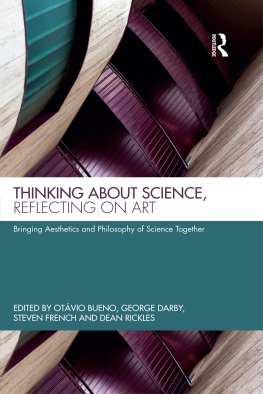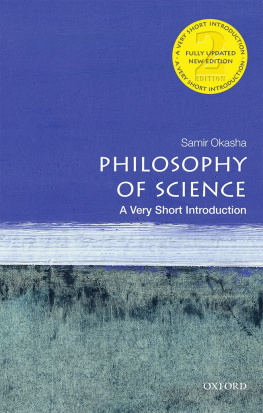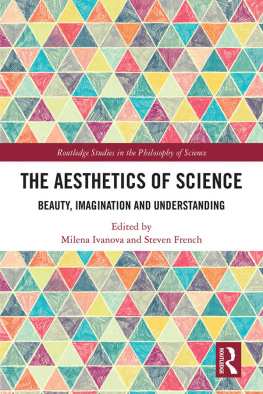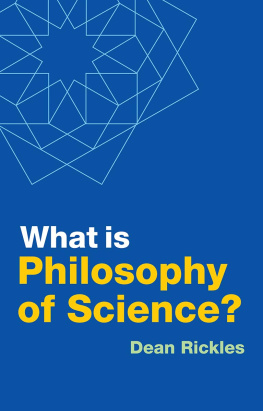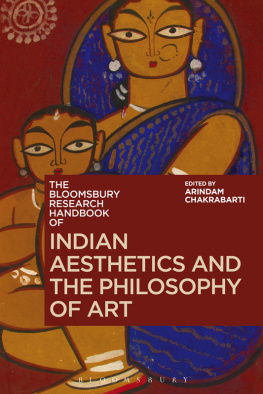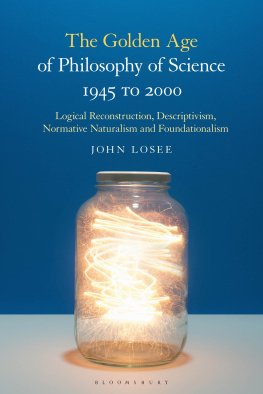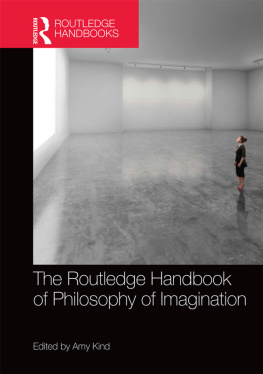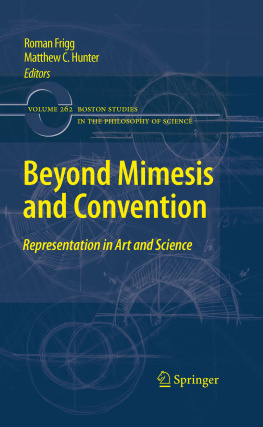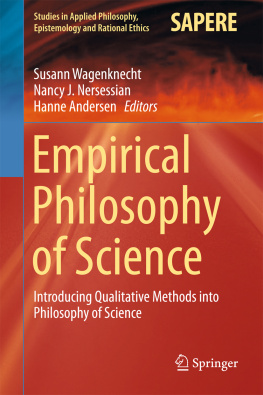Thinking about Science, Reflecting on Art
Thinking about Science, Reflecting on Art: Bringing Aesthetics and Philosophy of Science Together is the first book to systematically examine the relationship between the philosophy of science and aesthetics. With contributions from leading figures from both fields, this edited collection engages with such questions as:
Does representation function in the same way in science and in art?
What important characteristics do scientific models share with literary fictions?
What is the difference between interpretation in the sciences and in the arts?
Can there be a science of aesthetics?
In what ways can aesthetics and philosophy of science be integrated?
Aiming to develop the interconnections between the philosophy of science and the philosophy of art more broadly and more deeply than ever before, this volume not only explores scientific representation by comparison with fiction but extends the scope of interaction to include metaphysical and other questions around methodology in mainstream philosophy of science, including the aims of science, the characterisation of scientific understanding and the nature of observation, as well as drawing detailed comparisons between specific examples in both art and the sciences.
Otvio Bueno is Professor of Philosophy and Chair of the Philosophy Department at the University of Miami, USA.
George Darby is Postdoctoral Research Fellow at the University of Oxford, UK.
Steven French is Professor of Philosophy of Science at the University of Leeds, UK.
Dean Rickles is Professor of History and Philosophy of Modern Physics at the University of Sydney, Australia.
Thinking about Science, Reflecting on Art
Bringing Aesthetics and Philosophy of Science Together
Edited by Otvio Bueno, George Darby, Steven French and Dean Rickles

First published 2018
by Routledge
2 Park Square, Milton Park, Abingdon, Oxon OX14 4RN
and by Routledge
711 Third Avenue, New York, NY 10017
Routledge is an imprint of the Taylor & Francis Group, an informa business
2018 selection and editorial matter, Otvio Bueno, George Darby, Steven French and Dean Rickles; individual chapters, the contributors.
The right of Otvio Bueno, George Darby, Steven French and Dean Rickles to be identified as the authors of the editorial material, and of the authors for their individual chapters, has been asserted in accordance with sections 77 and 78 of the Copyright, Designs and Patents Act 1988.
All rights reserved. No part of this book may be reprinted or reproduced or utilised in any form or by any electronic, mechanical, or other means, now known or hereafter invented, including photocopying and recording, or in any information storage or retrieval system, without permission in writing from the publishers.
Trademark notice : Product or corporate names may be trademarks or registered trademarks, and are used only for identification and explanation without intent to infringe.
British Library Cataloguing-in-Publication Data
A catalogue record for this book is available from the British Library
Library of Congress Cataloging-in-Publication Data
A catalogue record for this book has been requested
ISBN: 978-1-138-68732-5 (hbk)
ISBN: 978-1-315-11492-7 (ebk)
Typeset in Bembo
by Deanta Global Publishing Services, Chennai, India
Contents
JULIA SNCHEZ-DORADO
CATHERINE Z. ELGIN
ROMAN FRIG AND JAMES NGUYEN
ANN-SOPHIE BARWICH
OTVIO BUENO
GEORGE DARBY, MARTIN PICKUP AND JON ROBSON
DEAN RICKLES
ALIX COHEN
ADAM TOON
STEVEN FRENCH
Ann-Sophie Barwich holds a postdoctoral position as Presidential Scholar in Society and Neuroscience at the Center for Science and Society, Columbia University, having received her PhD at the University of Exeter. She works on olfaction as an emerging model system for neuroscience and the senses. Recent publications include Making Sense of Smell, The Philosophers Magazine 73, 4147, 2016 and Bending Molecules or Bending the Rules? The Application of Theoretical Models in Fragrance Chemistry, Perspectives on Science 23, 443465, 2015.
Otvio Bueno is Professor of Philosophy and Chair of the Philosophy Department at the University of Miami. In Representing and Picturing: Approaches in the Sciences and the Arts ( American Society for Aesthetics Newsletter , 2014) and in How Theories Represent (with Steven French; British Journal for the Philosophy of Science , 2011) he examines connections between representation in art and science. He has also written on the role of images in scientific reasoning (When Physics and Biology Meet: The Nanoscale Case, Studies in History and Philosophy of Biological and Biomedical Sciences , 2011). He is editor-in-chief of Synthese and the Synthese Library book series.
Alix Cohen is a Chancellors Fellow at the University of Edinburgh, having previously taught at the Universities of Leeds and York. She is the author of Kant and the Human Sciences: Biology, Anthropology and History, Palgrave, 2009, as well as numerous articles and book chapters on Kant, including Kant on the Possibility of Ugliness, British Journal of Aesthetics , 53(2), 199209, 2013.
George Darby is a Postdoctoral Research Fellow at the University of Oxford. His research interests include the intersection of philosophy of science and metaphysics. In Representing Indeterminacy in Art and Science, American Society for Aesthetics Newsletter , 2014, he examines different ways in which indeterminacy occurs in art and on certain interpretations of quantum mechanics, and in Quantum Mechanics and Metaphysical Indeterminacy, Australasian Journal of Philosophy , 2010 and Vague Objects in Quantum Mechanics in K. Akiba and A. Abasnezhad (eds.) Vague Objects and Vague Identity , 2014, he examines issues in the formal representation of this kind of indeterminacy.
Catherine Z. Elgin is Professor of the Philosophy of Education at Harvard Graduate School of Education. She is the author of True Enough, Considered Judgment , Between the Absolute and the Arbitrary, With Reference to Reference , and co-author with Nelson Goodman of Reconceptions in Philosophy and Other Arts and Sciences .
Steven French is Professor of the Philosophy of Science at the University of Leeds and Co-Editor-in-Chief of The British Journal for the Philosophy of Science . His most recent publications include There Are No Such Things as Ordinary Objects in J. Cumpa and B. Brewer (eds.), The Nature of Ordinary Objects , Cambridge University Press, forthcoming and The Structure of the World: Metaphysics and Representation , Oxford University Press, 2014 (pbk 2016).
Roman Frigg is Professor of Philosophy at the London School of Economics and is Director of the Centre for Philosophy of Natural and Social Science (CPNSS) as well as Co-Director of the Centre for the Analysis of Time Series (CATS) at the LSE. He has published widely on issues in the philosophy of physics and the philosophy of science. His recent work includes Models and Representation with James Nguyen, in Magnani, Lorenzo and Bertolotti, Tommaso (eds.), Springer Handbook of Model-Based Science , Springer International Publishing, 2016 and Philosophy of Climate Science Parts I and II: Modelling Climate Change with Charlotte Werndl and Erica Thompson, Philosophy Compass , 10(12), 953964, 965977, 2016.
James Nguyen is a Postdoctoral Researcher in Philosophy of Science at the John J. Reilly Center at the University of Notre Dame and received his PhD from the London School of Economics. His recent publications include On the Pragmatic Equivalence between Representing Data and Phenomena, Philosophy of Science , 83(2), 171191, 2016 and The Fiction View of Models Reloaded with Roman Frigg, The Monist , 99(3), 225242, 2016.

